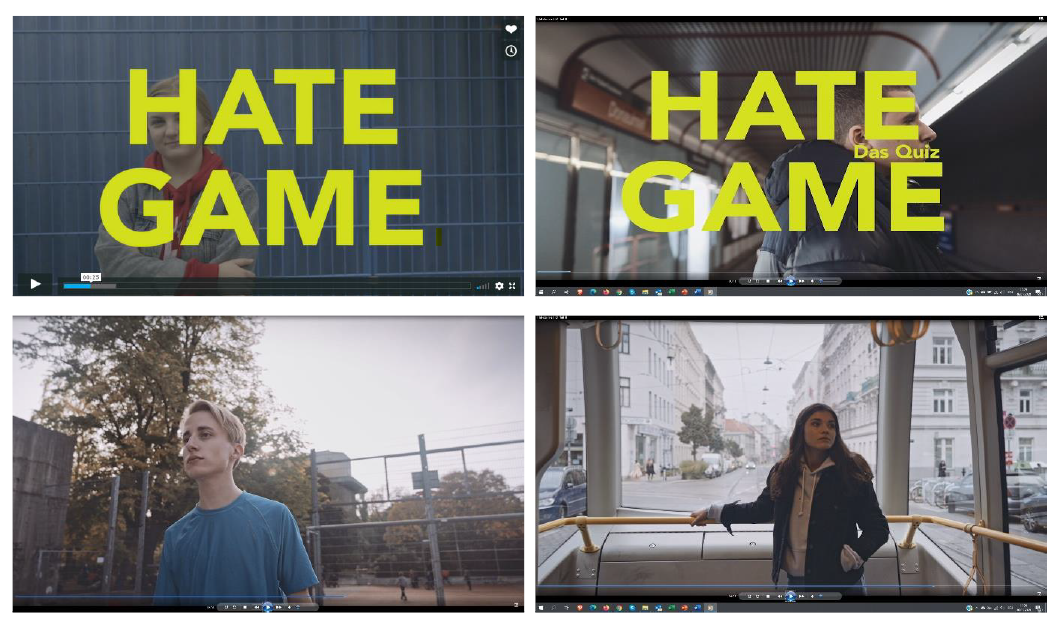 https://www.synyo.com/wp-content/uploads/SYNYO-NEWS-featured-image-NEW01007705EN.png
400
459
leo
https://www.synyo.com/wp-content/uploads/2017/09/synyo-logo.png
leo2025-01-01 10:47:112025-02-10 10:48:51BOND: Outcomes in Advancing Education, Tolerance and Heritage Preservation to combat Antisemitism
https://www.synyo.com/wp-content/uploads/SYNYO-NEWS-featured-image-NEW01007705EN.png
400
459
leo
https://www.synyo.com/wp-content/uploads/2017/09/synyo-logo.png
leo2025-01-01 10:47:112025-02-10 10:48:51BOND: Outcomes in Advancing Education, Tolerance and Heritage Preservation to combat Antisemitism
Counter Stories: Alternative stories, videos and materials for primary police prevention
Due to the increasing interconnectedness of our current societies, the number of potential recipients of extremist propaganda is increasing sharply. This creates both new challenges and opportunities for police prevention work against radicalization. In the Counter Stories project, innovative approaches and materials for prevention work were developed.
Propaganda starts with similar emotional impulses in its content, visual language and codes. In addition, the patterns of radicalization overlap, so that religiously motivated extremism can be grasped using similar “building blocks” as secularly motivated extremism.
In primary prevention against radicalization, alternative narratives are often used internationally. Impact research has confirmed the positive effects of alternative narratives (with a focus on inclusion, diversity, openness and critical thinking) in early prevention.
The aim of the Counter Stories project was therefore to develop alternative narrative and interpretation patterns for primary police prevention, to translate these into didactic concepts and to develop new, target group-specific early prevention materials. In addition to the orientation towards the international state-of-the-art, the project was geared towards the worlds of young people in the pre-radicalization phase.
Alternative narratives and didactic methodology
In order to develop effective alternative narratives for the Austrian context, national and international good practices were initially categorized and the success factors were worked out. Based on this, a catalogue of alternative narratives was developed, which is aimed at male and female adolescents. In addition, detailed requirements and scenarios for early prevention were developed with the consumer.
The main results of the project partners, the Austrian Institute for International Politics (oiip), the Nationwide Network for Open Youth Work (bOJA) – Advice Center for Extremism, and the Federal Ministry of the Interior (BMI) as consumers under the direction of SYNYO GmbH, developed a didactic methodology as well as videos and a Booklet for school police prevention work with young people.
Videos as a prevention tool
The videos tell the stories of four young people from different social backgrounds who come into contact with radicalized people or radical content in different contexts. The young people find themselves in a situation in life that – for various reasons – leads them to develop an interest in radical tendencies. It shows that the different radical ideologies address and pick up young people with similar narratives or promises. In terms of content, the focus was placed on right-wing extremism and jihadism in coordination with the consumer. In the sense of primary prevention, where alternative narratives can dock, there is a point in all stories where the young people learn to decode the narratives either through their own reflection or with the help of another person and thus do not tread the path to more intensive radicalization.

Accompanying materials and exercises
In addition to theoretical and practical guidance and didactic guidelines, the booklet also includes specific information on the videos and the narratives used in the videos. In order to encourage discussions with young people on the basis of the videos, the accompanying booklet also contains specific questions and exercises on the videos as well as a set of additional discussion and reflection formats that can be used if necessary.

Links
Keywords
Radicalization prevention, videos, accompanying materials, exercises, crime prevention, social work




